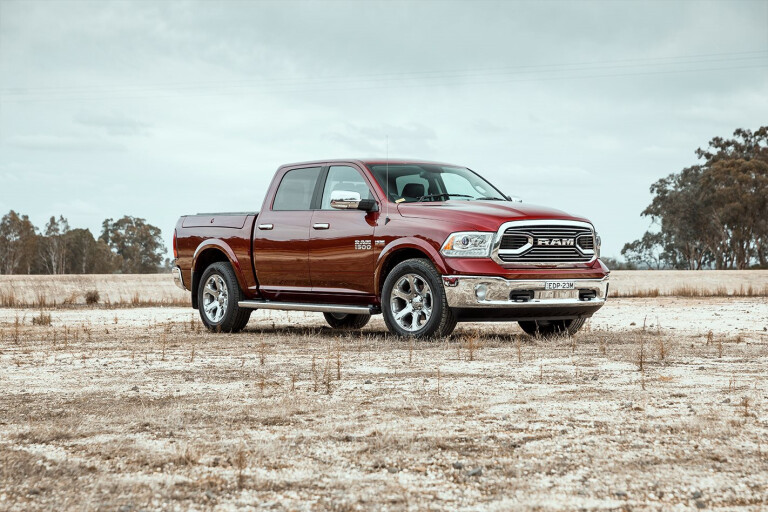
Australia’s love for the ute is undeniable, but even the best-selling dual-cabs in the country have had a tougher time finding homes in 2020 than usual.
Take the Ford Ranger and Toyota Hilux for example; the two most popular cars in the country have sold more than 20,000 4x4 examples so far this year.
However, those figures are down compared to the same period last year (18.6 percent for Toyota and 8.3 percent for Ford, to be exact).
Logic would dictate that a bigger, thirstier, more expensive style of ute would therefore be feeling the crunch hard in these tough economic times. Well, not quite.
The Ram 1500 has been a major sales success in 2020. While the entire market has been shrinking, sales for the large American pick-up have soared locally, with the brand enjoying 34 percent growth year-on-year.
Express and Laramie versions of the Ram 1500 have been selling at such a rate that local distributor Ateco has had to scramble to make sure dealers have enough stock.
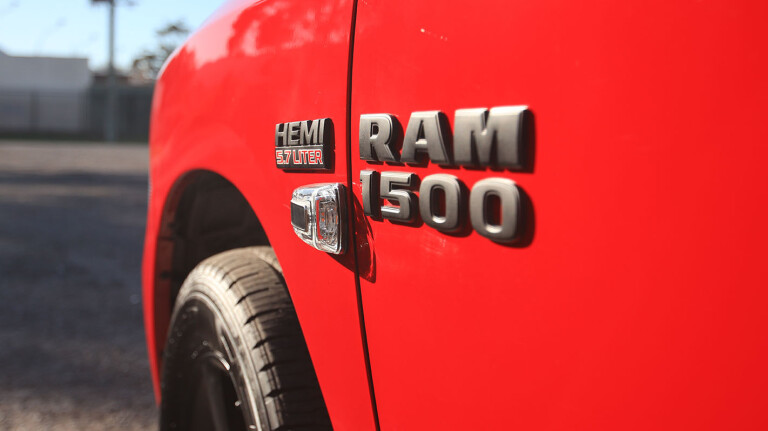
The pick-up style of utility isn’t going anywhere, so lets look at if this larger flavour of dual-cab is right for you. We’ll be ignoring the larger 2500 models as they have a very specific market, and are unlikely to convert regular dual-cab buyers (unless you’ve just come into possession of an ocean liner or small moon which needs towing)
The first thing to note is buying even the most affordable Ram is more expensive than any other dual-cab on the market – not that it hasn’t stopped people buying them like hot cakes.
The 1500 range starts with the Express, which costs $89,950, with the more luxurious Laramie costing an extra ten grand at $99.950. A new ‘Warlock’ model has been added to the local range at $104,950, bringing with it tougher suspension and styling tweaks.
Each is fitted with a 5.7-litre V8 engine producing 291kW/556Nm, mated to an eight-speed automatic transmission.
For $109,950 you can purchase a 3.0-litre turbo-diesel V6 Laramie that produces 179kW/420Nm (but we’d recommend sticking with the V8 petrol if you don’t mind the fuel bill).
In fact, one of the core drawcards for the Ram 1500 locally is the naturally aspirated V8 under the bonnet.
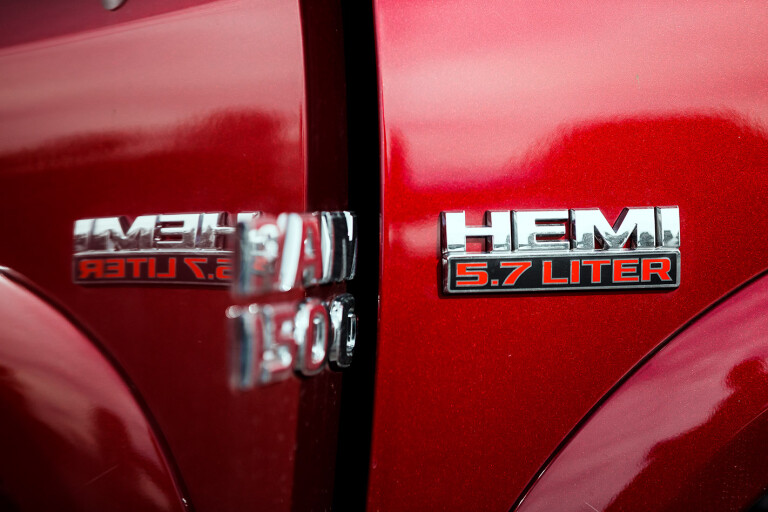
It is chock full of character, with a fantastic burbling exhaust note, and tons of grunt making the 1500 one of the quickest dual-cabs you can buy – despite its 2.5-tonne kerb weight.
The success enjoyed by Ram in 2020 has only cemented the fact that if you pair a good engine with a practical body, Australian buyers are willing to lay a fair whack of cash on the table to add your vehicle to their garage.
There’s also the serious pulling power (pun intended) of the Ram’s impressive 4.5-tonne braked towing capacity. That’s a full tonne more than the best dual-cabs on the market.
Even if what you are hauling is under the 3500kg braked limit of most dual-cabs, the Ram 1500 has a payload capacity of between 800kg and 845kg depending on variant, and maximum Gross Combination Mass (that’s the weight of the loaded car and trailer together) of 7237kg for all models.
With a kerb weight of 2650kg for the Laramie, that gives you a whole load of carrying capacity in terms of both luggage, and vehicle occupants.
For context, a Ford Ranger Wildtrak has a payload of 922kg, but a GCM of just 6000kg.
While some might be put off by the size of the 1500, it is of itself another draw card for the model. Yes, it’s not exactly a breeze to manoeuvre in urban carparks, but neither are other dual-cabs on the market.
Driving the Ram 1500 isn’t as daunting as some would have you believe. Any confident driver should, and could, be able to steer the pick-up comfortably through most metro suburbs.
That extra size is also a huge benefit in terms of occupant comfort. The rear seats of a regular dual-cab are best reserved for your most disliked mates, whereas the rearward pews of a 1500 are truly limousine spec. You won’t get better legroom outside of a long-wheelbase S-Class or 7 Series.
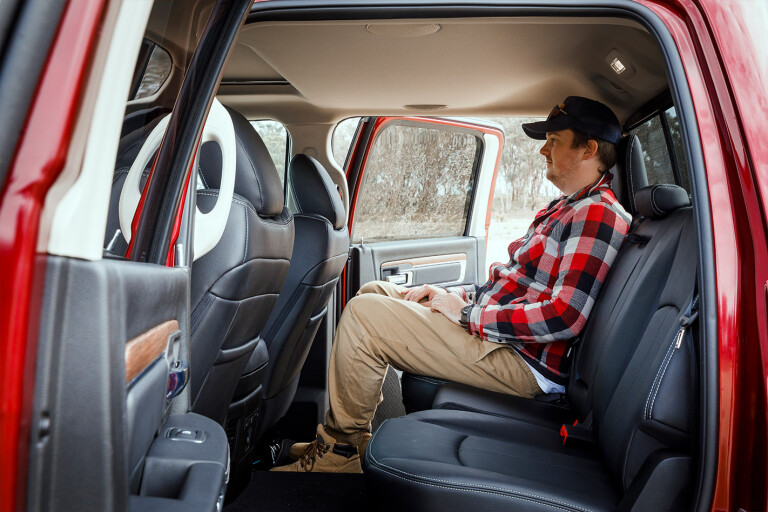
Finally, there is the fact that even the more affordable 1500 Express is absolutely rammed with features and luxury goodies.
For the ‘base’ model you get an 8.4-inch infotainment touch screen with Apple CarPlay/Android Auto, as well as a dual-zone air conditioning system.
There’s sizeable storage inside the cabin, USB ports scattered around like chocolates on Easter morning, a 7.0-inch multi-view instrument cluster between the gauges, cruise control, voice recognition, keyless entry, rear air vents, tyre pressure monitor, and automatic headlights.
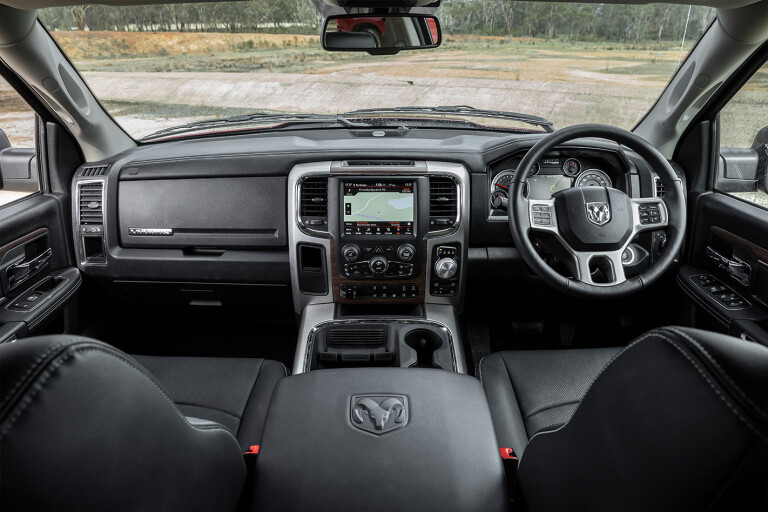
The more expensive Laramie adds partial leather seat trim instead of cloth, electric folding mirrors, a tonneau cover as standard (with RamBox storage in the tray), an Alpine 9-speaker sound system with subwoofer, steering wheel mounted audio controls, an electric sliding rear cab window, power 10-way adjustable driver’s seat with memory function, power six-way adjustable passenger seat, power driver and passenger lumbar adjustment, heated and ventilated front seats, heated rear seats, heated steering wheel, keyless and remote start, rear window defroster, and a power sunroof.
All of that adds up to the Ram 1500 Express and Laramie models enjoying a combined 2169 registrations so far this year.
That’s more than the Mercedes-Benz X-Class 4x4 (1471), and if Ram’s current growth continues it won’t be long until it is knocking on the door of mainstream 4x4 models like the Mazda BT-50 (4914) and Volkswagen Amarok (4776).
If you have the budget (and room) for something with more grunt and equipment than what is currently offered by the current crop of dual-cabs, the Ram 1500 isn’t a bad place to start looking.
COMMENTS